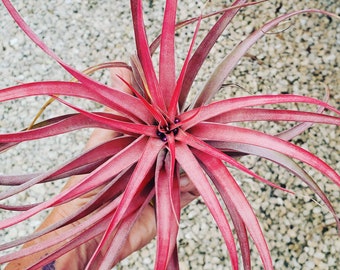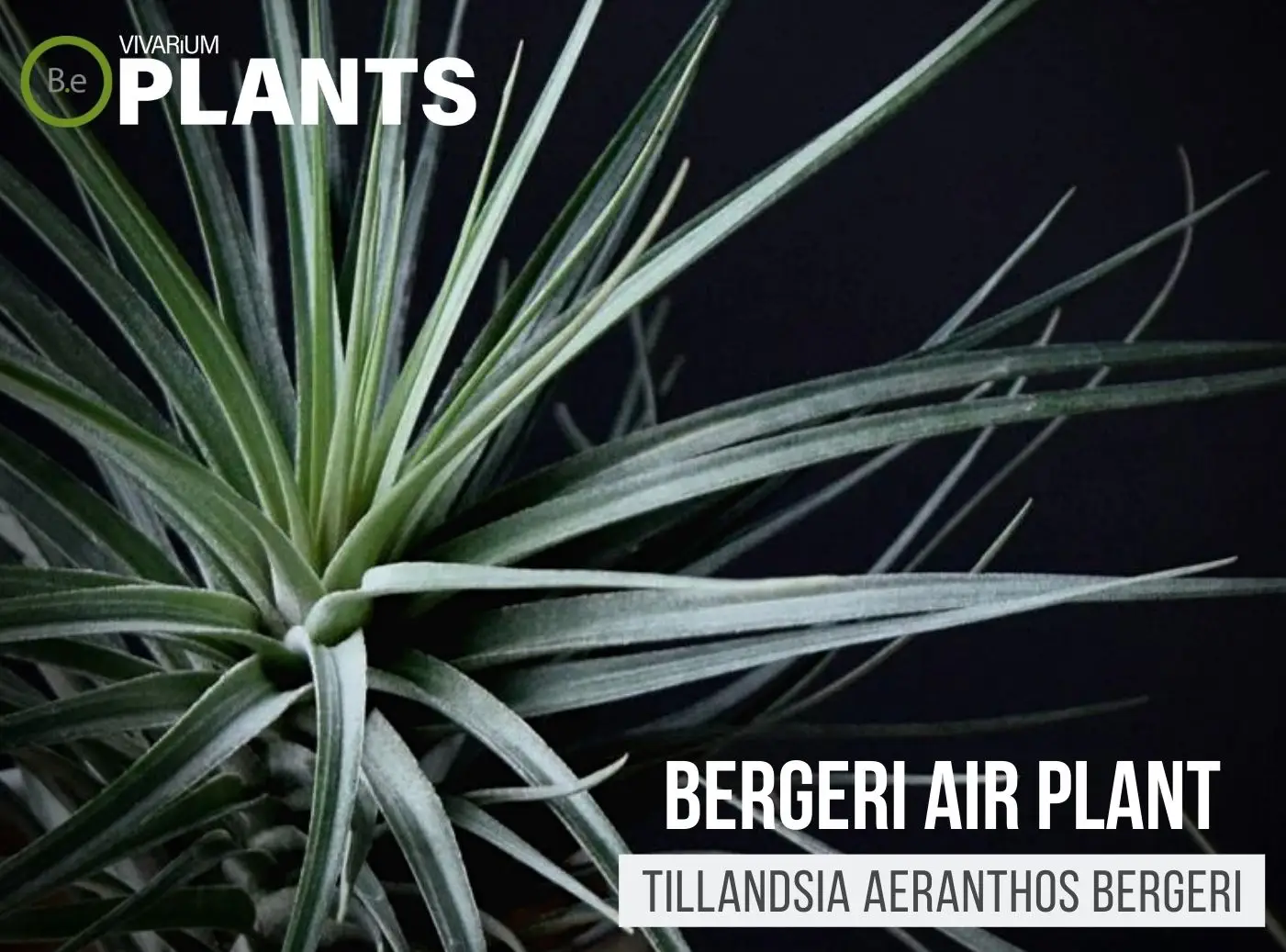Tillandsia abdita is a great plant to have in a vivarium due to its bright colors and low-maintenance needs.
It’s a small terrarium air plant that won’t require much space and a simple misting will be enough to help this plant thrive.
The demand for Tillandsia abdita is slowly increasing due to its popularity for terrariums.
As it gets more popular and available, more hobbyists are investing in them for their miniature ecosystems.
Table Of Contents:
ToggleWhat is Tillandsia abdita?
Tillandsia abdita is a species of the Tillandsia genus that can be easily identified by its silver-hued leaves.
This air plant is native to tropical and subtropical Americas, typically found growing epiphytic on trees and branches in mangrove swamps.
The leaves of this plant will drape outward from the center, giving it a unique and aesthetically pleasing look.


Tillandsia abdita Facts
Tillandsia Abdita is commonly known to emit a slight, sweet-smelling fragrance when exposed to adequate moisture.
This air plant doesn’t require deep soil, yet it’s quite sensitive to flooding or standing water and will rot if keeps too moist for too long.
The flowers of this plant will have an orange and red color combination and bloom in the spring or summer months.
Description
Tillandsia abdita is considered a small air plant reaching a maximum height of 2 – 3 inches.
The leaves of this plant are covered in a silver coloration with a powdery feel to the touch.
The plant is attachable by its offshoots or by tying it to something.
Habitat
The native habitat of Tillandsia abdita is found within tropical and subtropical climates like Honduras, Costa Rica, Columbia, Brazil, and Venezuela.
These climates often come with a warm, humid atmosphere and less-than-average amounts of rainfall.
pH Preference
Tillandsia abdita prefers slightly more acidic soil when in a vivarium.
This air plant thrives in pH levels ranging from 5.0 to 7.0 since it’s accustomed to living in shallow environments with low levels of oxygen.
Any acidity levels outside of this range may cause slow growth or lethargic color.
Vivarium Type
The abdita air plant is quite an easy-going species.
With that in mind, it will not be too complicated when it comes to choosing the type of enclosure it is grown in.
It is best to try and replicate the plant’s natural habitat as much as possible.
Doing so will make it easier to provide this air plant with its basic needs.
The proper setup and theme of the enclosure will make a big difference to the overall look and health of the plant.
Be sure to choose setups that are moist and high in humidity.
Here are recommended vivariums it will do well in:
- Paludariums – Half aquatic/ half terrain-based enclosure.
- Terrariums – Fully terrain-based enclosures with little to no aquatic features.
Vivarium Placement
This plant should be positioned in areas of the vivarium where there’s plenty of visibility and away from heavily shaded locations.
Higher air circulation around the Tillandsia will keep leaves well-aerated so the plant can photosynthesize optimally.
Place the plant in open areas with hardscape or on driftwood where it can take root in a stable spot.
Substrate
Because Tillandsia abdita is an air plant, it doesn’t require soil to survive.
However, it can be mounted with tropical material for aesthetics.
Think about investing in suitable mounts such as ceramic clay figures, driftwood, terrarium plants, or mountaineering wires.
These substrates will need to be damp but not wet.
Lighting
This species of Tillandsia require bright, yet indirect terrarium light in order to flourish and acquire the necessary energy.
You’ll want to stay away from extremely bright lamps that will easily burn the foliage or too dim lighting that will render the plant useless.
The best lighting scenario would be to mimic the tropical environment in which these air plants are natively found; either significantly shaded or heavily filtered by thin cloth or curtains.
Buy Tillandsia abdita
When it comes to buying Mangrove Tillandsia, there are a few things to keep in mind.
Making sure the plant is healthy when purchased is essential for its success in a vivarium.
Vegetation that is already in poor conditions will have a very hard time adjusting to new environments.
Click the image below to find out more about the current price and other relative info about this plant.
Tillandsia abdita Care and Propagation
Propagation with Tillandsia abdita is indeed a possible method for increasing the population of this plant.
Quality propagating tools such as plant scissors, cutting boards, and cleaning implements are highly recommended when dealing with this species.
It’s pretty much a given fact that these air, epiphytic plants should be handled gently and with extreme care.
How to Grow
Tillandsia abdita can be easily propagated on mountaineering wire and a piece of sterile wood.
Simply place the wire in a ‘u’ shape on the wood and then carefully slide the plant on top of the wire and adjust it until it’s in a position that’s comfortable for you.
This air plant should be placed away from water and will thrive when humidity levels are kept elevated.
Watering
Misting the Tillandsia abdita a few times a day will help the leaves and roots absorb the necessary water it needs to survive.
When the leaves turn yellow, they should be lightly misted or rinsed off to help prevent them from drying out.
You should never submerge the plant in water because this will weaken its outer layers, leaving it susceptible to rot and fungus.
Plants Similar to Tillandsia abdita
Adding diversity to an enclosure is key to an aesthetically pleasing setup.
Try mixing up the look of your vivarium with different flora that can easily co-exist in the same types of environment.
Furthermore, if you find this tillandsia hard to acquire or would like to consider something similar to this plant…
Here are other air plants you might find will do well with or in the place of Tillandsia abdita:
Conclusion
Overall, Tillandsia abdita is a great air plant to have in your vivarium, and with the right maintenance, it can be a great way to add some extra color and character.
This is considered an easy-to-care-for species as long as certain conditions are met, such as adequate air circulation, humidity, and neutral to acidic soil.
Keeping these conditions constant will ensure the continued health and success of this plant.
Frequently Asked Questions
Air plants need bright, indirect sunlight for optimal health, but can survive in both shade and sun.
No, you should not soak air plants upside down. The best way to soak air plants is to submerge them in water for around 30 minutes, then gently shake off the excess water and allow them to dry before placing them in an area with bright, indirect sunlight.
No, it is not hard to keep air plants alive. With minimal care, air plants can remain healthy and happy indoors or outdoors.






